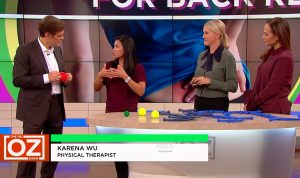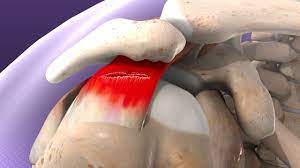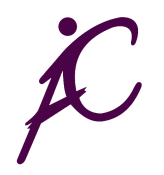 ActiveCare Physical Therapy, PC
ActiveCare Physical Therapy, PC
12 W 37th St. Ste. 1202
New York, NY 10018

Rotator Cuff Injuries: Causes, Symptoms, Risks, Diagnosis, and Treatments
What are important things to know about rotator cuff injuries? Four muscles make up the rotator cuff, which helps to support and rotate the shoulder. They are a major contributor to shoulder movement. Your rotator cuff helps stabilize and move the shoulder joint every time you place your hand in space. Injury to the rotator cuff occurs frequently.

Strains, tears, and inflammation are the most typical rotator cuff injuries. Here is the information you need to know regarding this condition: its causes, symptoms, risks, diagnosis, and treatments.
What are the Causes of Rotator Cuff Injuries?
Any regular or strenuous activity can result in a rotator cuff injury. The following are the most common causes of rotator cuff strains or tears:
- Injuries of acute nature
- Over usage of muscles, especially overhead
- Wear and tear over time
 Mild to severe rotator cuff injuries are possible. They typically fall into either the acute or chronic category. Overuse of the rotator cuff muscle mostly leads to acute or chronic pain. The tendons that attach muscles to bones are susceptible to injury, which leads to strains and partial or complete tears.
Mild to severe rotator cuff injuries are possible. They typically fall into either the acute or chronic category. Overuse of the rotator cuff muscle mostly leads to acute or chronic pain. The tendons that attach muscles to bones are susceptible to injury, which leads to strains and partial or complete tears.
This condition frequently affects tennis players who employ an upward serve, athletes, and persons who must reach up overhead to do any work. A fall, a vehicle accident, or an unexpected movement can cause strain or rupture of the rotator cuff. These injuries frequently result in severe and immediate pain.
What are the Symptoms of Rotator Cuff Injuries?
Not every rotator cuff injury is painful right away. Some are brought on by degenerative diseases, which means the rotator cuff may be harmed for months or even years before symptoms manifest.
Typical signs of a rotator cuff injury include:
- Significant pain that makes you avoid physical activities using your arm
- Difficulty in reaching behind your back
- Tenderness and pain when you reach overhead
- Issues in reaching out to the side
- Frequent pain in the shoulder, mostly at night
- Increasing weakness in the shoulder
- Difficulty in sleeping on your affected side
Consult a physician if this kind of symptom persists for more than a week or if your arm stops functioning.
What are the Risks of Rotator Cuff Injuries?
Acute or degenerative rotator cuff injuries are both possible. A single incidence is usually what causes acute injuries. These can be brought on by falling, lifting something that is excessively heavy, or getting the shoulder pulled into an unnatural position. This kind of rotator cuff injury is more common in young people. Long-term usage is the cause of degenerative injuries. Those who are most vulnerable to these injuries are:
- Athletes who especially play baseball, tennis, rowers, and wrestling
- People aged above 40
- People that perform repetitive activities like painting and lifting
How can Rotator Cuff Injuries be Diagnosed?
To diagnose the rotator cuff injuries, your physician may do the following:
- Perform your physical examination
- Take your medical history
- Run some imaging scans
Your doctor might inquire about your work-related physical activity. These inquiries establish whether you are more likely to develop a degenerative condition. Your doctor will evaluate your strength and range of motion. They’ll also rule out related disorders like arthritis or a pinched nerve.
Any bone spurs can be found via imaging tests, such as an X-ray. The rotator cuff tissues may be rubbed against by these tiny bone growths, which can lead to discomfort and irritation. Another option is to utilize an MRI or ultrasound scan. These instruments look at soft tissues like muscles and tendons. Doctors use them to recognize tears and demonstrate their size and severity.
What are the Treatments for Rotator Cuff Injuries?
Resting the injured arm is one form of treatment, as is surgery. To prevent the injury from worsening, seek care as soon as possible. Around 80% of patients with rotator cuff injuries report symptom improvement with nonsurgical or conservative therapy. These types of therapies consist of:
- Exercising for restoration, strength and mobility
- Applying cold and hot packs to the area to reduce swelling
- Injecting the area with steroids that reduce inflammation
- Shoulder Physical therapies
- Over-the-counter medications to reduce inflammation
- Wearing slings to isolate arm motion
- Resting the affected area
Rotator Cuff Injuries: Conclusion
A rotator cuff injury is common and can be easily treated if diagnosed on time. If you are looking for the most suitable treatment for your rotator cuff injury, contact us at ActiveCare Physical Therapy ®.
Call us now to schedule a consultation. We would love to hear from you!
ActiveCare Physical Therapy ©
29 West 38th Street
Suite 601
New York, NY 10018
(212) 777-4374
staff@bestptnyc.com

